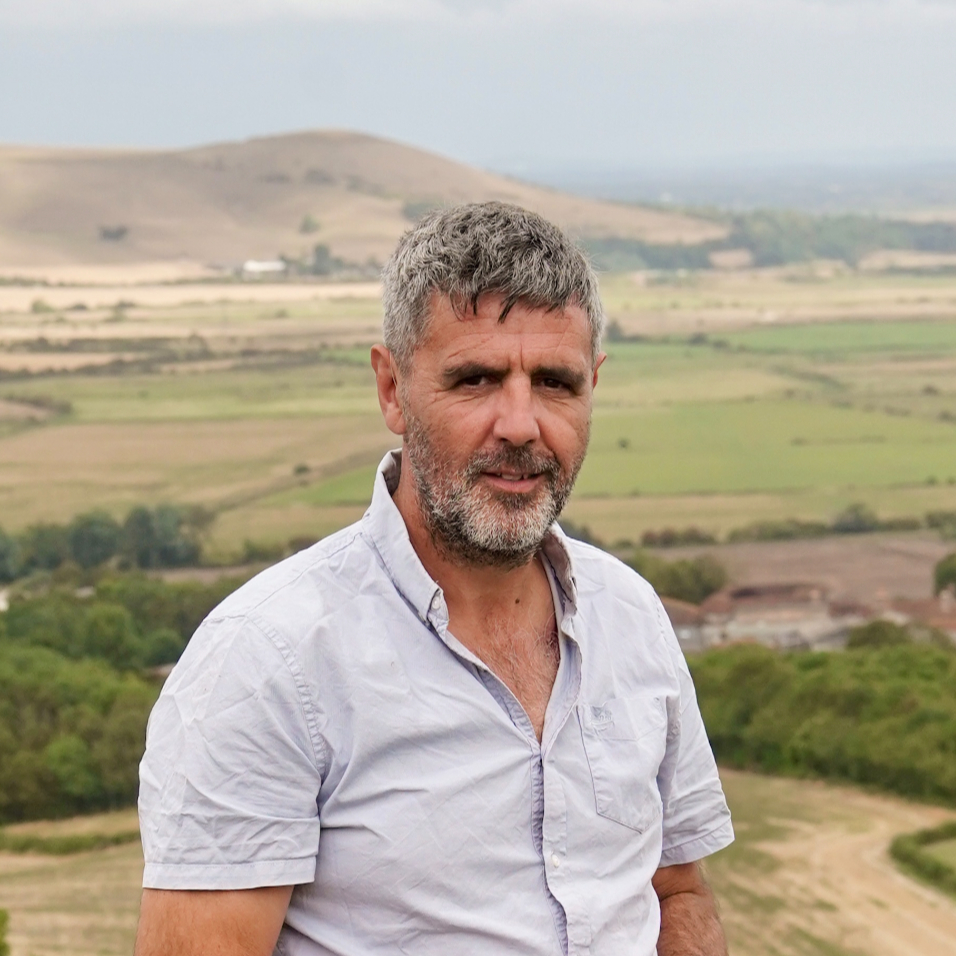End of Season Reflections: Building Habitats, Hope and Momentum at Iford.
- Ben Taylor

- Oct 2
- 3 min read
The mornings are quieter now. The hay has been cut, the wildflowers are fading, and the light feels softer across the South Downs. As another season draws to a close, I’ve been taking stock of what we’ve here at Iford and what’s still to come.
We started the year planting over 5,000 trees on our new habitat bank. It was a tough season, with an extreme spring drought that had me worried we’d lose a lot of young trees before they’d even had a chance to establish. But remarkably, almost every one survived. Today they’re standing strong, and the grassland surrounding them is alive with colour: Birdsfoot Trefoil turning whole fields bright yellow, and the air buzzing with insects.
When you walk across the site now, you can feel the change. Skylarks and corn buntings are back in good numbers, and even nightingales have been recorded on site. Hares are a regular sight. There’s a healthy population of roe deer, and every now and then you come across an antler in the grass, a quiet sign that nature is returning on its own terms.

Milestones that matter
One of the biggest moments this year was signing our 30-year legal agreement with the South Downs National Park Authority. It means every hectare we restore is protected, monitored and managed for at least three decades. That’s a key part of what makes our Voluntary Biodiversity Credits so robust: each one represents a measurable, legally secured gain for nature.
We’ve now got around 50 hectares actively being restored. By this time next year, I hope that figure will have grown to 170 hectares, with new woodland, grassland and scrub habitats extending across the Houndean block and beyond.
People make it real
Every visitor I’ve taken round the site this year has been blown away. There’s something about standing here, surrounded by birdsong and looking out to the sea, that makes the whole idea of nature recovery click.
We’ve run guided ecology walks and taken part in Lewes District Council’s Walk This Way programme. These moments of connection are powerful. They remind me that this isn’t just about restoring land; it’s about helping people reconnect with it too.
As a farmer, you’re brought up to protect your boundaries. But I’ve come to love seeing people out there enjoying it, knowing that what we’re creating together will be here long after I’m gone.

Looking ahead
Iford is already a key part of Weald to Waves, the major nature recovery corridor linking Ashdown Forest to the Sussex coast. Together with other estates, farmers and community partners, we’re creating connected habitats that allow wildlife to move freely across the landscape. That joined-up effort is one of the most exciting parts of this work, and it’s vital if we want to make real, lasting change.
Over the next year, we’ll continue expanding our restoration areas and deepening our collaboration within Weald to Waves. Each new hectare at Iford strengthens the wider network and helps turn local action into landscape-scale recovery.
To everyone who’s supported Iford so far, thank you. You’ve helped build the foundations of something big: a living, breathing demonstration of how biodiversity recovery can happen right here on our doorstep.
If you haven’t yet been to see it for yourself, come and visit. Or buy a credit and join us on this journey. Every 3×3 metre plot restored is a small act with a big legacy.
Across Britain, hundreds of small projects like this are taking root. Each one adds a thread to the wider fabric of renewal that our landscapes so badly need.
Nature can recover, and it’s happening, one meadow at a time.


Comments